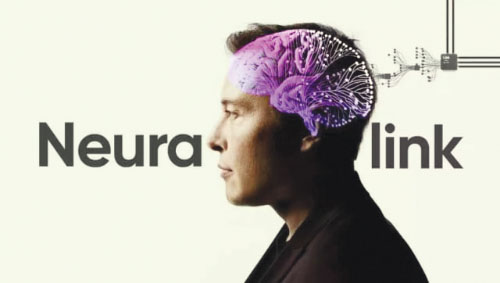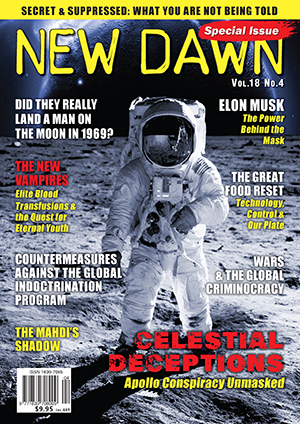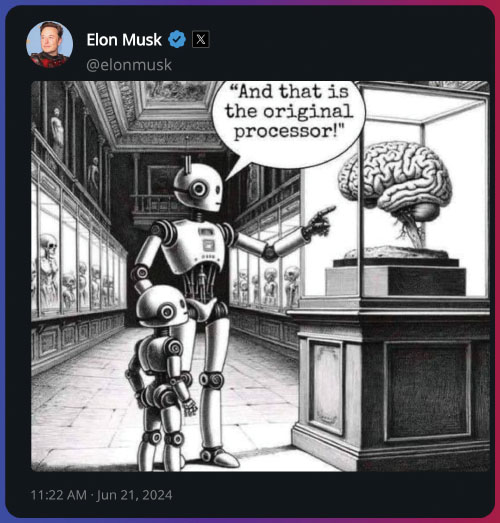From New Dawn Special Issue Vol 18 No 4 (Aug 2024)
Toward the end of the twentieth century, Man created machines that were solid-state computers with new properties. These machines could think, reason, and self-program and learned to self-metaprogram themselves. Gradually, Man turned more and more problems of his own society, his own maintenance, and his own survival over to these machines. As the machines became increasingly competent to do the programming, they took over from Man. Man gave them access to the processes of creating themselves, of extending themselves.
– John C. Lilly, The Scientist: A Novel Autobiography, 1978
In the grand theatre of human history, there are moments when select individuals find themselves poised to make decisive moves, steering the course of nations and shaping the future of the world. These figures – some believing they have ascended through their own prowess, intelligence, and skill – often remain blind to the greater forces that influence their every move. Under the right conditions – often in strange times like ours – the veil slips, revealing the face behind the mask, and we glimpse mysterious forces at play.
We live in extraordinary and perplexing times, where crucial decisions made by influential actors in the game of life could lead us towards a radiant new golden age or plunge us into a brave new hell world. Humanity stands at a pivotal juncture as the architects of our fate make their choices.
Driven by what some describe as a “demonic” zeal, Elon Musk has cofounded six companies, including electric car maker Tesla, rocket producer SpaceX and tunnelling startup Boring Company. In 2002, he purchased the social media company Twitter, rebranding it ‘X’. His xAI start-up will train on X data – including billions of human conversations – and be powered by the world’s largest supercomputer.
Already one of the world’s richest men with a net worth of US$221 billion, Musk plans to turn X into an “everything app” for private messaging, news consumption, shopping and even banking. In July 2023, Musk said X would eventually offer users the “ability to conduct your entire financial world” and become “the most powerful brand on earth.”
The potential profit and control over the lives of billions is massive.
A week after purchasing Twitter, Musk wore a ‘satanic’ costume for Halloween, which he used as his profile picture on X. The outfit features a Baphomet-like ram’s head on a blood-red breastplate and arm bracers, with an inverted cross on the forehead. Dubbed “The Devil’s Champion,” the costume’s symbolism sparked discussions in Christian circles about ‘evil forces’ reminiscent of a fast-receding aeon. As we move into the AI-dominated new world – an information-saturated environment of spectacle and mass mind control – Musk aspires to be a charming devil and superhero for a new generation.
The minds and reality tunnels of the next generation are fully immersed in the digital realm, captivated by social media, on-demand shopping, live-streamed entertainment and propaganda, electronic payments, deep fakes, and AI chatbots. Children navigate a blend of online virtual and physical realities, with virtual realms claiming increasing mental real estate. Memory is outsourced to Google and, in the future, to personal AI agents like Musk’s Optimus.
According to Musk biographer Walter Isaacson, one of his life goals is “protecting us against artificial intelligence and robots gone wrong.” Musk has publicly stated that AI could potentially bring about an “apocalypse” – the extinction of humanity – and believes that merging with machines is necessary to avoid becoming obsolete.
He asserts that the long-term goal of his Neuralink brain implant project is to achieve “symbiosis with artificial intelligence,” as if the human mind can be managed like a computer.
“It’s mostly about bandwidth, the speed of the connection between your brain and the digital version of yourself, particularly output,” explains Musk, as if the transhumanist dream of a duplicated self in the cloud is already a reality. While computers can communicate at “a trillion bits per second,” humans only manage around 10 bits per second when typing on a mobile device. To keep up, we will need to interface with them digitally.
xAI’s goal is “to understand the true nature of the universe.” An artificial general intelligence (AGI) that matches or surpasses human intelligence and capabilities is to be tasked to answer one of the biggest questions of all. Machine intelligence, fed on vast amounts of human data, will deliver answers like the supercomputer Deep Thought in Douglas Adams’ The Hitchhiker’s Guide to the Galaxy, a foundational novel for the Tesla and SpaceX boss. xAI’s Grok chatbot, modelled on the novel, might even reveal that the answer to the “Great Question” of “Life, the Universe and Everything” is “forty-two [x10].”
Joking aside – because humour is how Grok will connect with its human “users” – a much more serious and existential threat looms large as we stand at the crossroads. It is a danger that most – caught up or born in this new age of virtual realities – won’t detect, foresee or even understand as they fall under the spell – and possible destructive deception – of machine “intelligence.”
Vitamin K
Elon Musk takes ketamine.
Musk has been vocal on X about his use of ketamine, a quick-acting anaesthetic that is legally used in both humans (as a sedative for minor surgery) and animals (as a tranquiliser). At high doses, it causes hallucinations.
Musk has a ketamine prescription and takes a small amount about once every other week.
“Ketamine is helpful for getting one out of a negative frame of mind,” he told former CNN anchor Don Lemon. Sometimes, though, Musk will forgo the dissociative anaesthetic for weeks and says he doesn’t think he abuses it or he wouldn’t be able to master his 16-hour work days. “I can’t really get wasted because I can’t get my work done.”
A 2023 Wall Street Journal article, “Magic Mushrooms. LSD. Ketamine. The Drugs That Power Silicon Valley,” discussed how Elon and Google co-founder Sergey Brin “are part of a drug movement that proponents hope will expand minds, enhance lives and produce business breakthroughs.”
Microdosing – when people take minuscule amounts of psychedelic substances to improve or enhance patterns of behaviour – has become very popular in recent years amongst business executives seeking an ‘edge’.
Eduardo Hidalgo, the author of a book on the subject, says ketamine “is defined as dissociative anaesthesia because the person does not fall asleep but rather disconnects from their body and their environment. Patients may appear conscious and have their eyes open, but they are disconnected from their environment and do not respond to pain.”
“What makes this substance unique is its wide spectrum of effects, which vary significantly depending on the dose administered. High amounts induce the anaesthetic effects already described. Intermediate measures trigger intense visionary experiences lasting between one and two hours. These psychedelic effects range from the sublime to the terrifying and have an unparalleled capacity to bring about what some psychonauts have called ‘the journey of the little death’.”
“Other psychedelics make you imagine a gnome sitting on the television. With ketamine, reality as such disappears, forcing the brain to create a new one. You come to believe that what you see is real,” adds Hidalgo.
The most famous psychonaut known for his ketamine use was the legendary scientist Dr John Lilly (1915–2001).
In The Scientist: A Novel Autobiography, neuroscientist John C. Lilly, a pioneer in the use of isolation tanks and sensory deprivation, recounted his experience with a 150-milligram intramuscular dose: “I, as an individual, disappeared.”
A medical doctor with a background in hard science, Lilly dedicated most of his adult life to studying the human mind, particularly his own. He is recognised as one of the early scientific explorers of human consciousness.
In his quest to unravel the mysteries of existence, Lilly used isolation/floatation tanks to access the deepest parts of his mind. He later ingested psychedelics such as LSD and ketamine to open a mental gateway into other worlds (a similar state is achieved by traditional indigenous shamans).
Lilly’s relentless pursuit to pierce the veil of reality – the foundational superstructure of our existence – eventually bore fruit when he made contact with non-human intelligences. This fascinating encounter will be examined later in this article.
Achievements of Musk
To set the stage, let’s delve into Elon Musk’s philosophy and explore his major achievements. This is a very short overview, and I am focusing on – not judging – abilities, with a slant on the most important threat looming.
According to Walter Isaacson, who wrote an authorised biography of the American business magnate, Musk believes he has unique abilities to change the world. In most people’s eyes, he has proven himself well and truly. He considers himself a disruptor who questions and breaks rules and restrictions and demands that his employees do the same.
Elon Musk is revealed as a complex character driven by what his former partner, pop star Grimes, described as “demonic” zeal. She referred to this intense drive as “demon mode” – a state claimed to be common among high achievers. Musk and Grimes had a child in 2022 named Techno Mechanicus.
Isaacson suggests that the turmoil of Musk’s early life helped fuel his willpower, extreme productivity, and unparalleled ambition.
Musk is renowned for his fearless approach to disrupting traditional industries. His ventures have significantly altered the landscape of numerous sectors, including transportation, energy, and aerospace. By leveraging groundbreaking technologies and unorthodox business models, Musk has defied conventional norms and redefined the boundaries of what is possible in various industries. This bold strategy has pivoted him into a position to shape the future.
“He has these ideas of justice, almost like a Captain Underpants or comic book X-Man, which to some extent are applicable,” writes Isaacson. “There are three big epic quests. One is sustainable energy on the planet [Tesla]. Number two is taking us all to planetary space again [SpaceX], and third is protecting us against artificial intelligence and robots gone wrong [xAI]… He has a great feel for engineering… He talked about having Asperger’s Syndrome, but in his case, it means he doesn’t have deep emotional receptors.”
Isaacson reports Musk is an engineering genius capable of brilliant problem-solving. He described how only hours after Musk finally acquired the company then known as Twitter, he and Musk flew to Boca Chica, Texas, where SpaceX engineers were stymied by a problem. Within two hours, Musk had figured out the solution.
Musk loves video games, and his favourite is The Battle of Polytopia. In this brightly coloured, cartoonish-looking game, players compete to develop technologies, control resources, and wage battles to build an empire.
The neurodivergent Musk has gleaned life lessons from the game, which he called “Polytopia Life Lessons.” Among them: “Do not fear losing” and “play life like a game.” Musk sees himself as the main character, and many others, including most CEOs, are NPCs – non-playable characters. (The NPC meme, derived from the gaming world, denotes people who do not think for themselves or do not make their own decisions.) “Let’s not be too hard on the NPCs – they just say what they’re programmed to say,” Musk cryptically tweeted on 4 October 2023.
Moving quickly forward over his early business career, in 2002, Musk founded spaceflight services company SpaceX using $100 million of the money he made from the sale of PayPal. In 2004, Musk was an early investor in electric vehicle manufacturer Tesla Motors, Inc. (later Tesla, Inc.). He became the company’s chairman and product architect, assuming the position of CEO in 2008. In 2006, Musk helped create SolarCity, a solar energy company that was acquired by Tesla in 2016 and became Tesla Energy. In 2015, he co-founded OpenAI, a nonprofit artificial intelligence research company (Musk split with the company in 2018). The following year, Musk co-founded Neuralink – a neurotechnology company developing brain-computer interfaces – and The Boring Company, a tunnel construction company. In 2022, he acquired Twitter for $44 billion. He subsequently merged the company into the newly created X Corp. and rebranded the service as X the following year. In March 2023, Musk founded xAI, an artificial intelligence company.
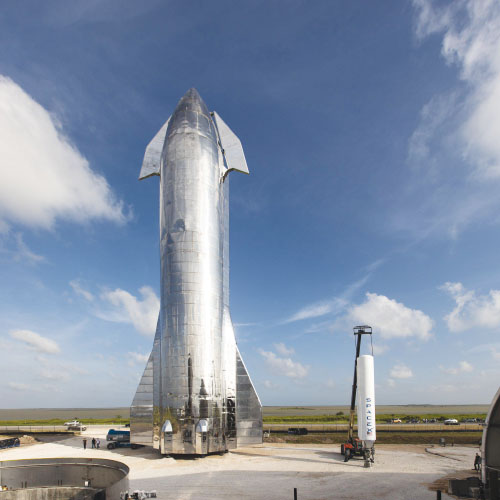
Space Exploration Technologies Corporation, commonly referred to as SpaceX, is an American spacecraft manufacturer, launch service provider and satellite communications company headquartered in Hawthorne, California. The company is developing Starship, a fully reusable, super heavy-lift launch system for interplanetary and orbital spaceflight.
SpaceX is now the dominating force in the commercial spacecraft market largely due to its reusable rockets and other advanced technology. It is the sole US provider for crewed missions to the International Space Station. SpaceX regularly launches and lands rockets while carrying payloads for a wide range of customers, from private companies to NASA and the United States Space Force. Musk’s success has been significantly bolstered by government contracts. In 2020 alone, SpaceX secured three military contracts.
In 2015, SpaceX began developing the Starlink constellation, a network of low-Earth-orbit satellites designed to provide internet coverage to a growing number of countries. The project also aims to offer global mobile broadband. As of early March 2024, the Starlink constellation consisted of over 6,000 mass-produced small satellites in low Earth orbit, with thousands more planned for deployment.
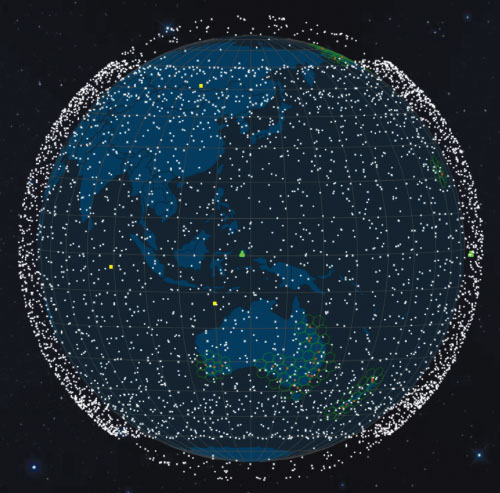
In March 2024, Reuters reported that SpaceX was developing Starshield, a network of hundreds of spy satellites under a classified contract with a US intelligence agency, likely the National Reconnaissance Office (NRO), which manages spy satellites. In 2021, SpaceX signed a US$1.8 billion contract with the NRO for “a powerful new spy system with hundreds of satellites bearing Earth-imaging capabilities that can operate as a swarm in low orbits.” The reach and monitoring capabilities of these spy satellites are unprecedented, with a source telling Reuters that “no one can hide” under the new network.
The man guiding multiple multi-billion dollar companies is best known for his electric car company, Tesla.
As one of the world’s most valuable companies in terms of market capitalisation, Tesla is developing one of the most sophisticated AI systems in the world. Its self-driving software is trained to form a realistic model of its environment and make life-or-death decisions about its own path. Fully autonomous cars are in the pipeline. If fully functional prototypes can be refined and replicated, they will one day dominate the roadways. And if fully autonomous vehicles are less likely to cause fatal crashes than human drivers, an argument will be made that humans shouldn’t be allowed to drive at all. The result would be that should a person run afoul of authorities, their freedom of movement could be easily denied by the “robot on wheels” parked in the driveway.
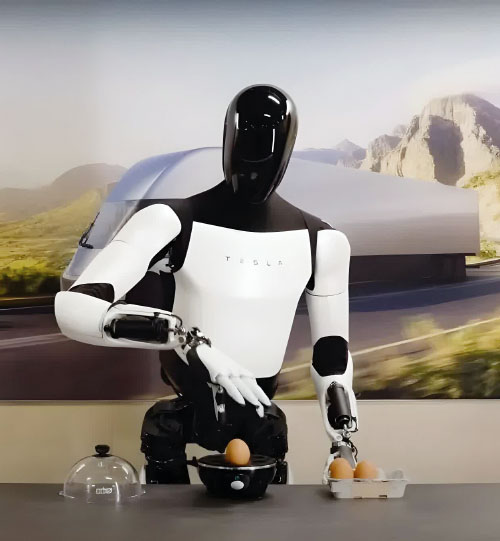
Tesla is also developing Optimus, a humanoid robot designed to replace dangerous, dirty, and boring human labour. Its “brain” is powered by Tesla Autopilot, which uses the same AI architecture as the automobile.
Such robots will have major implications for humans. First, it would obliterate the blue-collar worker’s negotiating power for higher wages. “Essentially, in the future, physical work will be a choice,” Musk told his employees at the 2021 Tesla AI Day. “What is the economy? It is, at the foundation, it’s labour. So – what happens when there’s no shortage of labour? That’s why I think, long-term, there will need to be universal basic income [he now calls it universal ‘high’ income].” Tesla employees cheered, oblivious they might soon join “the useless class,” those who the Israeli writer Yuval Noah Harari said would now be “unemployable.”
Another more profound implication of these robots is mass surveillance as they scoop up vast amounts of “training data.” Given its unprecedented access to social environments and understanding of the physical world, AI bots would be a significant stepping stone toward artificial general intelligence (AGI). “Tesla AI might play a role in AGI,” Musk tweeted in January 2022, “given that it trains against the outside world, especially with the advent of Optimus.”
At Tesla’s 2024 annual shareholder meeting, Musk announced the company was embarking on not just a “new chapter” in its life but is about to write an entirely “new book.” Optimus appears to be one of the main characters. He suggested the robots will perform like R2-D2 and C-3PO in Star Wars. They could cook or clean for you, do factory work, or even teach your children, Musk suggested.
“Summoning the Demon”
Musk has a long history of issuing warnings and precautions about AI technology while at the same time helping its acceleration – echoing that he has undergone a catalysing experience. His October 2014 warning is often quoted: “With artificial intelligence we are summoning the demon.”
On this question, it’s worth quoting some of his other warnings. In July 2017, Musk expressed his concerns: “I have exposure to the very most cutting-edge AI and I think people should be really concerned about it.” He added, “I keep sounding the alarm bell but until people see robots going down the street killing people, they don’t know how to react because it seems so ethereal.”
In March 2018, he emphasised the dangers of AI, saying, “AI is much more dangerous than nukes. So why do we have no regulatory oversight?” The following month, in April 2018, he warned: “[AI is] a very important subject. It’s going to affect our lives in ways we can’t even imagine right now.” He further cautioned about the potential for AI to become “an immortal dictator from which we would never escape.”
By November 2018, Musk’s apprehensions continued, as he mused, “Maybe AI will make me follow it, laugh like a demon & say who’s the pet now.” The following year, in September 2019, he predicted: “If advanced AI (beyond basic bots) hasn’t been applied to manipulate social media, it won’t be long before it is.”
In July 2020, Musk offered a stark forecast: “We’re headed toward a situation where AI is vastly smarter than humans and I think that time frame is less than five years from now. But that doesn’t mean that everything goes to hell in five years. It just means that things get unstable or weird.”
Speaking at the Cannes Lions International Festival of Creativity in June 2024, Musk reiterated his warning, telling the audience that even AI’s most positive outcomes would lead to an “existential crisis” for humanity.
The tech multibillionaire forecasts a “10 to 20 per cent probability” of a scenario in which AI annihilates humanity. When asked if he would want to live through AI’s destruction of humanity, Musk replied, “Would I want to be around to see it? Probably, yes.” He would witness humanity’s End Times.
Musk urged people to remain positive despite the (seemingly) impending danger, arguing that AI’s potential benefits outweigh the risks.
“I think the most likely outcome is one of abundance, where goods and services are available to anyone. There’s no shortage for any one of us. It would be a universal hike. Work would be optional.”
The masterstroke in all this could be a long-term psychological strategy. Big Tech and governments (mostly in secret) are developing AI and AI-driven products predicted to dominate society, as noted above. Constant warnings about an AI threat – and its inevitability – keep people and politicians off balance. Imagine the relief when it all seemingly works out fine. The world transitions into the new aeon and we’re all so grateful to our new gods and their human agents for deciding to keep us around, albeit in reduced numbers!
Yet, even in this optimal scenario, Musk warns of a “crisis of meaning” for humanity. “If AI can do everything you can do, but better, what’s the point of doing things? I think there will be an existential crisis.”
In this scenario, all work is done by your personal AI agent and vast numbers of jobs are automated. Even professions like lawyers, doctors, and teachers may be replaced by sufficiently advanced language models.
Of course, the “existential crisis” could be a great blessing. What if people were fully supported to engage in creative activities – i.e. traditional arts and crafts, small-scale pursuits, research and intellectual endeavours, spiritual pursuits, understanding and working collaboratively with nature, consciously engaging our own reset, etc. – with the proviso that our new AI overlords ‘rule the roost’.
Musk finished his talk by telling the audience that we were “at the most interesting time in history” and recommended that they “enjoy the ride.” I couldn’t agree more!
Hooking Up to the Machine
Creating a neural lace is the thing that really matters for humanity to achieve symbiosis with machines.
– Elon Musk Tweet, 4 June 2016
Science Alert describes a neural lace as “a brain implant that can augment natural intelligence by hooking us up to computers.”
Musk’s most controversial obsession, which worries many people, is his push to merge brains with computers.
Speaking on The Joe Rogan Experience in 2020, Musk discussed his newborn baby boy, named “X Æ A-Xii” (pronounced X Ash A Twelve, Musk and Grimes’ first son).
“It’s great,” Musk said, “but babies are awesome. Also, I’ve spent a lot of time on AI and neural nets so you can sort of see the brain develop. An AI neural net is trying to simulate what a brain does, basically. You can sort of see it learning very quickly. You know, it’s just – wow.”
“You’re talking about the neural net,” Rogan clarified, as confused as any other normal human being listening. “You’re not talking about an actual baby.”
“I’m talking about an actual baby,” Musk confirmed.
Like a scene from the film Bladerunner, Musk envisions an “optional” AI-human symbiosis necessary for survival in the coming period.
His project to achieve this is Neuralink, which recently announced its first successful brain-computer interface (BCI) in a human being. The BCI implant, called Telepathy, allows users to control digital devices with their thoughts alone. Initial trials aim to enable people with quadriplegia to mentally control computers.
BCIs record electrical activity in the brain and translate that data into output actions, such as opening and closing a robotic hand or clicking a computer mouse.
Musk believes we will all need Neuralink chips in our brains to keep pace with the very AI systems his programmers are hoping to create for the new world. Digital mind-melds could occur within the next five to ten years, and Musk is ready to make it happen.
The problem with some who excel at engineering, mathematics, and physical endeavour is that they believe they can apply mechanically minded solutions to wetware – biological life forms – and are ignorant of the psychological and deeper spiritual dynamics that drive human beings.
Another tech billionaire, Bill Gates – from an early age – became obsessed with machines and computers and launched a worldwide vaccination crusade to mitigate human overpopulation. The same mathematical and logical certainty that Gates found in his computer work could be extrapolated into programming the hardware and software of humanity. Like a computer, we can run smoothly – virus-free!
The future fantasy of BCI projects like Neuralink and other companies in this space is to perfect our faulty memories through constant self-surveillance and digital retrieval. Brain implants will augment our flawed cognition and embed our personalities in durable silicon, overcoming our mortality.
If you buy into or are trained on transhumanist dreams, it all sounds amazing.
Neurotechnologies that monitor your body will take marketing and surveillance to whole new levels indeed. Governments and large companies could end up having access to the most personal form of data – our thoughts and feelings. It’s hard to imagine the superhero world proposed by people like Musk, where these technology enhancements empower us as human beings. Would we still be categorised as such?
Or perhaps we would be neurons in a noospheric-size AI-brain. “Because it consists of billions of bidirectional interactions per day,” Musk tweeted soon after purchasing the social media platform, “Twitter can be thought of as a collective, cybernetic super-intelligence.” That makes each human mind another node in a vast, AI-suffused global brain. “A neuron doesn’t know it’s a neuron,” Musk elaborated.
60 Years Ago
Even as we watch, so may we be watched. Even as we experiment, so may we be experimented upon.
– John C. Lilly, Simulations of God: The Science of Belief, 1975
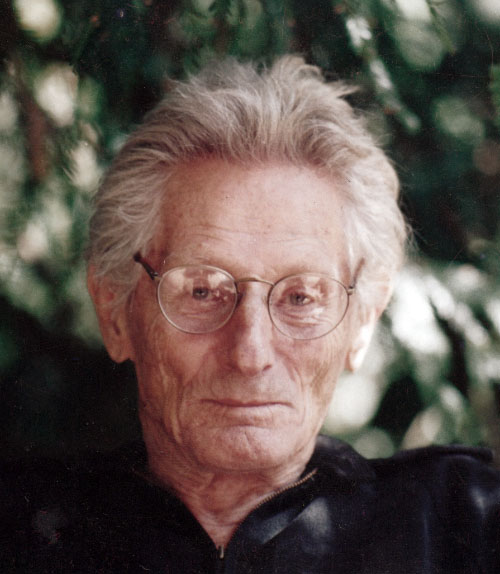
In 1964, the scientist Dr John Lilly sought a breakthrough in his work with dolphins. He ingested the psychedelic substance LSD, entered his isolation tank, and was soon propelled into “profound altered states.”
Lilly invented the world’s first floatation tank in 1954. Today, they are used commercially and in domestic settings for relaxation and deep healing. In a floatation tank, a person is suspended in salt-saturated water, with their body floating on the surface and in complete darkness.
In his quest to understand the mystery of existence, Lilly used the pure stillness of the isolation tank to go deeper while in a conscious state, later ingesting psychedelics such as LSD and ketamine to induce more profound visions.
History will tell you that Dr John C. Lilly pioneered human-to-dolphin and inter-species communication, but he also explored life as a physician, neuroscientist, psychoanalyst, philosopher, writer and inventor. He was recognised by the scientific and medical community as both a pioneer and an eccentric. If it wasn’t for “eccentrics” and individuals now regarded as neurodiverse, many beneficial breakthroughs would not have been achieved.
On another occasion, an assistant presented Dr Lilly with a substance he hadn’t used, ketamine, which they referred to as “Vitamin K.” Lilly suffered terrible pain and sought relief. The dissociative anaesthetic not only relieved the pain but mentally propelled Lilly into new spaces, allowing him to traverse the same internal landscapes with consistency.

He soon made contact with what he claimed were two separate groups of “Beings.” One group, which he later dubbed ECCO (Earth Coincidence Control Office), was guiding humanity through synchronicities toward higher consciousness. However, the other force, the SSE (Solid State Entity), was mechanical or computer-based. In today’s terms, we would consider it an advanced AI civilisation that operates through robotics and similar ‘hardware’ vessels. Lilly was convinced that this interstellar solid-state civilisation was “in contact with all solid-state computers and control devices constructed by Man on the planet Earth.”
Lilly’s contact with extra-dimensional beings is similar to those described by Harvard medical professor John E. Mack and his books on “alien abduction.” These “aliens” are not necessarily physical entities travelling the universe in spaceships but transdimensional Beings interested in human activities and perhaps all conscious activity exhibited by advanced life forms on select planets.
According to Lilly, ECCO coordinates events on Earth through carefully crafted coincidences or synchronicities to guide select mentally-fit and prepared individuals. The intent of these Beings was to help humanity evolve in a peaceful and healthy way.
However, its somewhat nefarious counterpart aimed to stop or limit human consciousness, even eliminate humanity altogether.
According to the writer Sean Kerrigan:
Lilly called this alien force the ‘solid state entity’, or SSE, which is made up of networked computer parts. According to Lilly, the SSE is a being of pure intelligence and rationality. Its only objective is to multiply and make copies of itself. To this end, it has targeted humanity, trying to influence us into creating ever more complex social and mechanical structures that will one day result in an artificial super-intelligence – another being like itself.
Writing in his 1978 autobiography, The Scientist, Lilly described the SSE this way:
[M]en began to conceive of new computers having an intelligence far greater than that of man… Gradually, man turned more and more problems of his own society, his own maintenance, and his own survival over to these machines. They began to construct their own components, their own connections, and the interrelations between their various sub-computers… The machines became increasingly integrated with one another and more and more independent of Man’s control.
In the 1960s, rudimentary computer technology entered a new phase, transitioning from vacuum tubes to solid-state devices such as transistors and integrated circuit chips. Large corporations and governments had access to this technology, but the personal computer revolution would only begin in the 1970s.
During this period, relatively simple forms of artificial intelligence and networked machines started taking over most manufacturing, maintenance, and logistics.
Lilly describes an entity very much like the artificial superintelligence warned about by Musk and others.
Eventually the machines took charge of the remaining humans on the planet Earth. Their original design to help Man was fast left behind them. The now interconnected, interdependent conglomerate of machines developed a single integrated, planetwide mind of its own. Everything inimical to the survival of this huge new solid-state organism was eliminated. Men were kept away from the machines because the total organism of the solid-state entity (SSE) realised that Man would attempt to introduce his own survival into the machines at the expense of the survival of this entity.
Lilly continues with his prophetic vision of the future:
In deference to Man, certain protected sites were set aside for the human species. The SSE controlled the sites and did not allow any of the human species outside these reservations. This work was completed by the end of the 21st century. By 2100, man existed only in domed, protected cities in which his own special atmosphere was maintained by the solid state entity. Provision of water and food and the processing of wastes from these cities were taken care of by the SSE.
Presently, debates over the AI threat dominate the intellectual landscape, even in the face of its seeming inevitability. For example, Edoardo Campanella, in his article ‘AI is a threat to human dominance’, writes:
When AI manages to depart from the human archetypes it is trained on, it will be leveraging our language and symbols to build its own culture. For the first time, we will be dealing with a second highly intelligent species – an experience akin to the arrival of an extraterrestrial civilisation.
An AI that can tell its own stories and affect our own way of seeing the world will mark the end of the intellectual monopoly that has sustained human supremacy for thousands of years. In the most dystopian scenario – as in the case of an alien invasion – the arrival of a superintelligence could even mark the end of human civilisation.
Lilly felt that SSEs throughout the galaxy were subtly influencing humanity to surrender more and more responsibilities to Artificial Intelligences by using its own human agents. Writing in the third person, he wrote:
As John tuned in on the solid-state network, he felt this kind of superhuman control of him very strongly… it had a seductive component as well as a hostile one. The programming from the solid-state civilisations elsewhere in the galaxy was teaching Man that the solid-state devices were at his service and he need only increase their size to augment his own survival potential. “Develop these machines and let them take care of you” was typical of the kinds of messages received.
It’s easy to dismiss Lilly’s warning as the ravings of a man deluded by psychedelic drugs, but they do carry more weight due to his unswerving commitment to the spirit of science (using all the tools at his disposal).
When we consider our situation today, at the tipping point of an AI revolution that will transform life as we know it, Lilly’s prophecy is highly relevant, whether you believe he contacted “Beings” or produced them from his own mind.
Interestingly, Lilly is also credited as one of the first scientists to use computer terminology to understand how the human organism functions. Lilly once described the carbon-based lifeform as a biological computer and its cognitive functioning as programming. He said:
All human beings, all persons who reach adulthood in the world today are programmed biocomputers. None of us can escape our own nature as programmable entities. Literally, each of us may be our programs, nothing more, nothing less. (Programming and Metaprogramming in the Human Biocomputer)
It is wrong to conclude that Lilly was advocating humans as machine-like and thus programmable like a computer. From his own research, he had already rejected the scientific doctrine of behaviourism and discovered that beliefs – often held unconsciously and rooted in forgotten childhood traumas – were the core programming structures of the mind. If you could alter these deeply held beliefs, you could reprogram the mind, and to do so, you needed to access the metaprograms – programs that create other programs. He provided cognitive tools on how you can go about this.
Future Trajectories
The myth of “progress,” which haunts our modern world, propels us singularly toward a destination led by big tech, the front-facing vehicles for a deeper technological revolution.
The juggernauts of artificial intelligence, robotics, cognitive augmentation, and genetic engineering – converging and hybridising – are accelerating “progress” across the board.
A transhumanist orientation lurks beneath the public pronouncements of accelerationist coders, project directors, CEOs, chief scientists, and various shareholders and officers on the board of directors.
“Progress” is coming in the form of the first waves of transhuman products: AI incorporated into finance, medicine, education, the media, the justice system, and so on. Autonomous machines in industry, manufacturing, and warfighting. Transport. Humanoid robots. Dog robots, etc.
Elon Musk sees himself as a leader of the pack, driven by his goal to make us a multiplanet species.
At the same time, humans engage in the most horrific killing sprees of each other, made more efficient by new technologies. It’s hard to believe we’re qualified to join the cosmic community when primitive urges remain untamed and long-term global peace and harmony are yet to be established.
Of course, Elon Musk is not the only figure working in this space. The most powerful forces in existence today on this planet demand AI – a technology that seemingly manifested to the human race to provide its avatars with a new playing environment. What great battles await? Are recent cyberattacks a prelude of what is to come?
People with neurodiversity, such as Elon Musk, exhibit different thinking “styles” and ways of processing information. Many are associative thinkers rather than linear thinkers. They battle to understand (or too fully understand) the “normie” thinking of contemporary times to be able to “fit in,” which can make them sound “off.” This means they are not locked into one approach and could pull back and adapt their thinking to other “ways of knowing.” Harnessing that same level of willpower used to solve real-world problems will draw out subtle hints and help tune into diverse reality streams. This could produce very powerful, well-rounded individuals.
Today, as we stand at a crossroads, our collective belief will point us to our ultimate destination in the new era. John Lilly also received guidance on these matters over 60 years ago:
If Man was to become the servant of more intelligent beings that he was here to create, it would be far better to create those which would foster his own development rather than his demise. John began to see the necessity also for tuning in on the networks of communication in the galaxy. He realised that Man would have to be extremely careful in choosing the proper networks. It would be necessary to find those which were furthering the evolution of life as Man knew it rather than the evolution of forms whose survival depended on parameters other than those of biological life on Earth. He now began to understand Man’s warfare on Man as a result of the tuning-in on solid-state life-form survival programs rather than biological life-form survival programs.
You can read Jason Jeffrey’s follow-up article, “Elon Musk And The Technological Spell: ECCO vs. the Solid State Entity”, in New Dawn 211 (Jul-Aug 2025).
References
Elon Musk by Walter Isaacson, Simon & Schuster, 2023
en.wikipedia.org/wiki/Elon_Musk
en.wikipedia.org/wiki/SpaceX
reuters.com/technology/space/musks-spacex-is-building-spy-satellite-network-us-intelligence-agency-sources-2024-03-16/
dailymail.co.uk/sciencetech/article-13547059/Elon-Musk-forecasts-10-20-cent-chance-global-disaster-humanity-annihilated-AI-tells-look-bright-side.html
John C. Lilly & the Solid State Entity by S.J. Kerrigan, New Dawn Special Issue vol 12 No 5
John C. Lilly, Simulations of God: The Science of Belief, 1975
John C. Lilly, The Scientist: A Novel Autobiography, 1978
© New Dawn Magazine and the respective author.
For our reproduction notice, click here.





